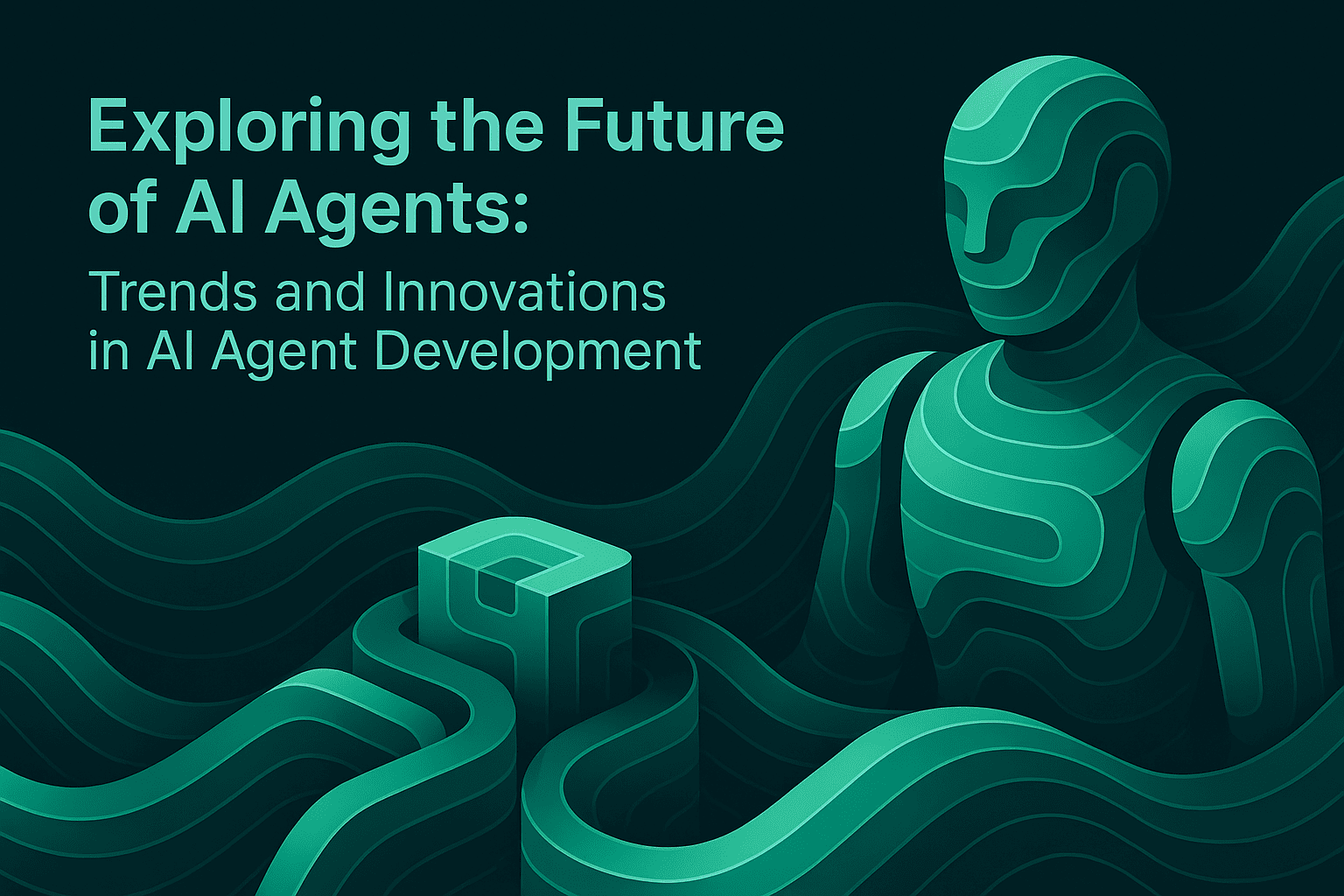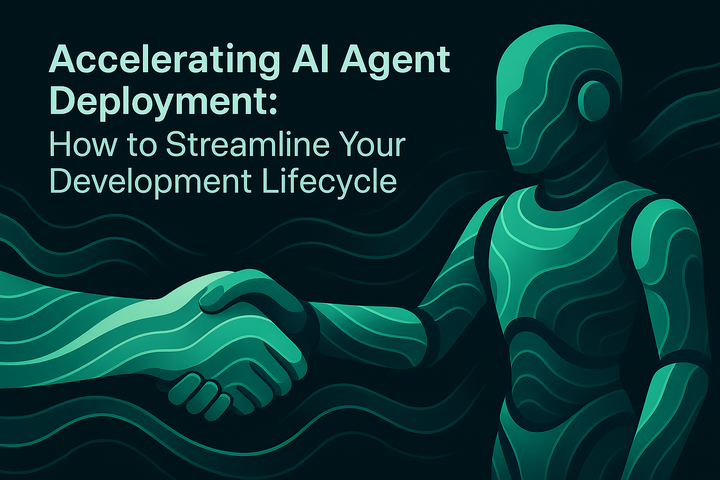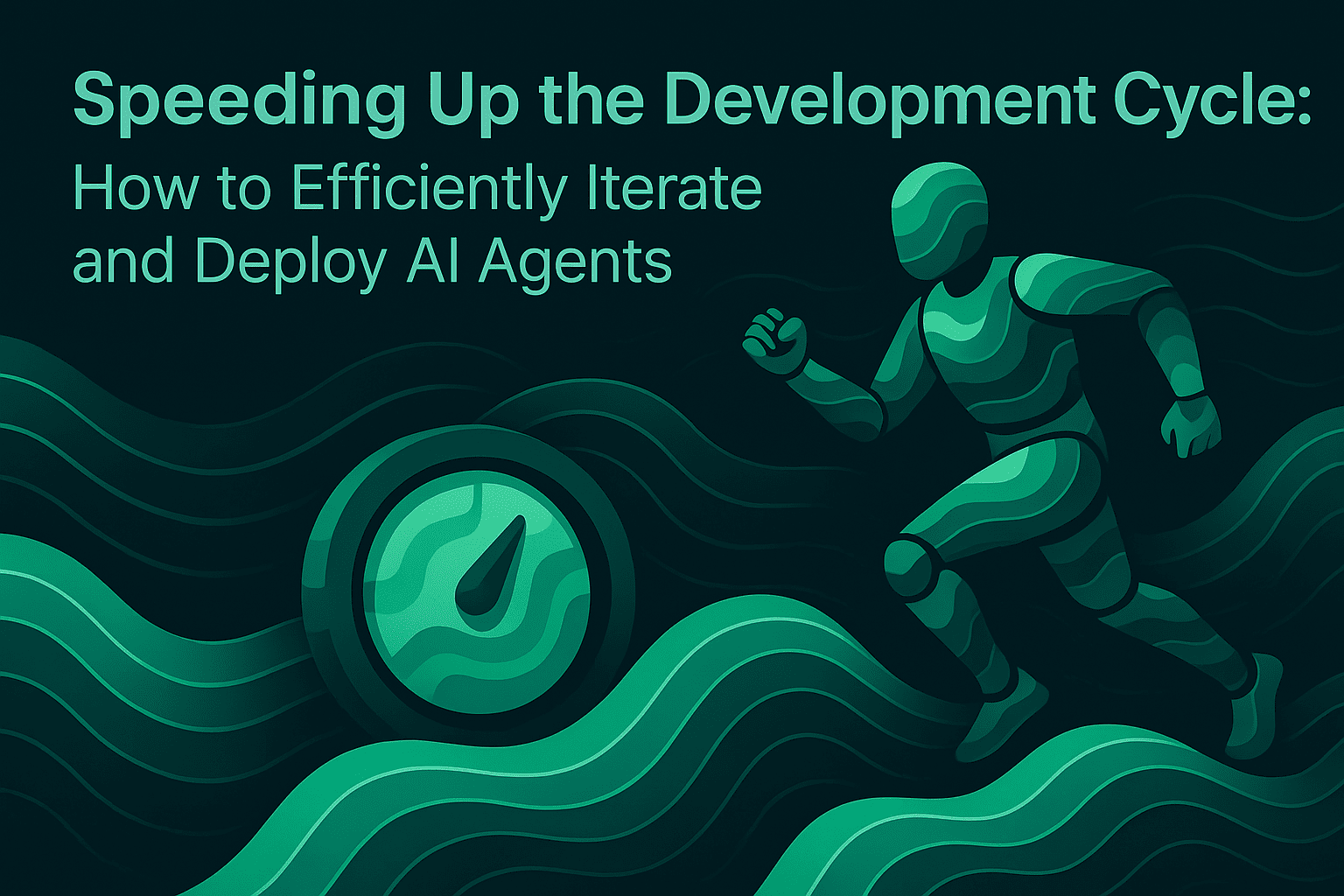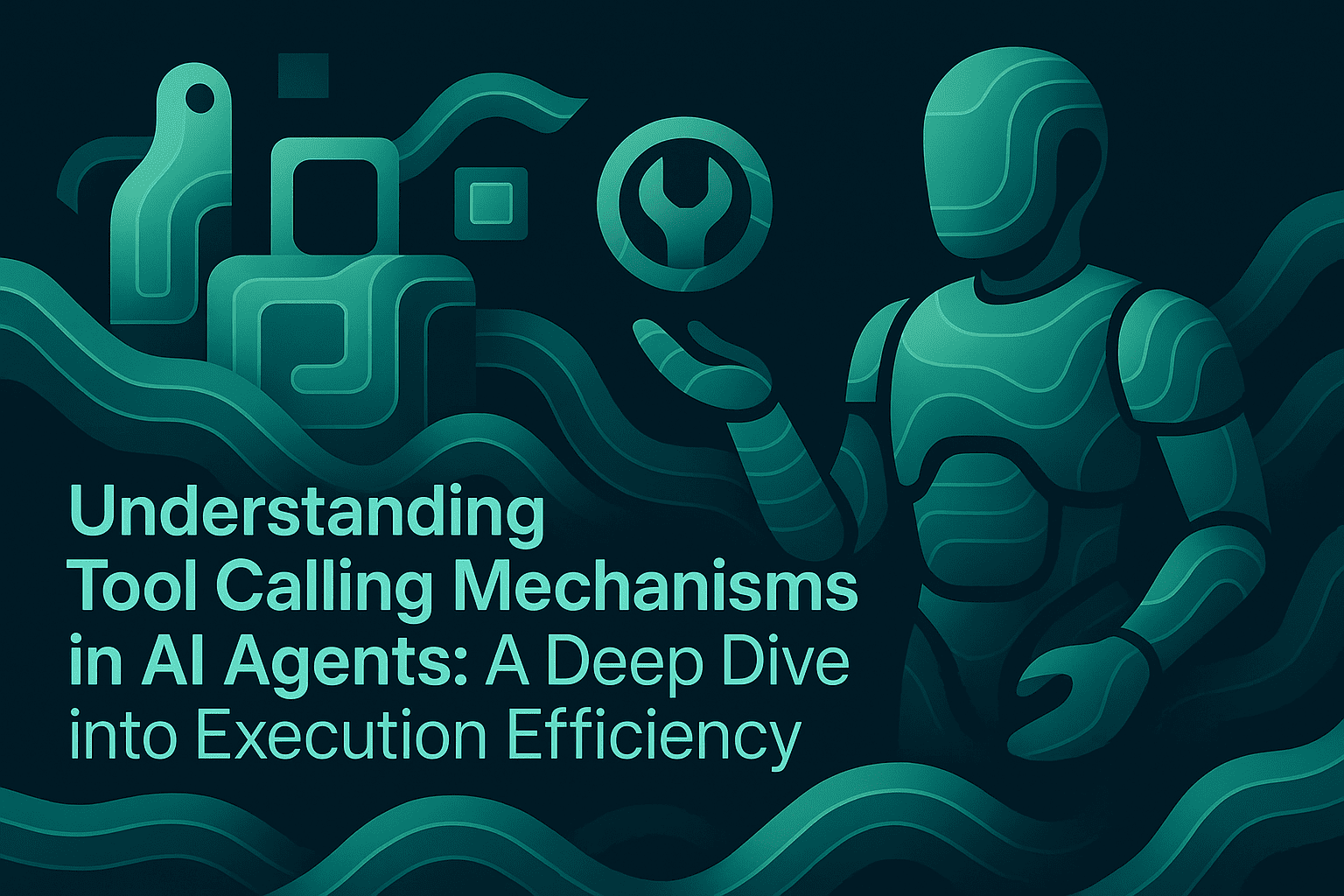Exploring the Future of AI Agents: Trends and Innovations in AI Agent Development

The artificial intelligence landscape is experiencing a fundamental transformation as we progress through 2025. AI agents and AI-ready data have emerged as the two fastest advancing technologies on the 2025 Gartner Hype Cycle for Artificial Intelligence, signaling a shift from generative AI as a standalone capability to autonomous systems that can plan, reason, and execute tasks independently. A survey of 1,000 developers building AI applications for enterprise found that 99% are exploring or developing AI agents, confirming that organizations are moving beyond experimentation into production deployment.
This article examines the key trends and innovations shaping AI agent development, the technical challenges teams face in building reliable agentic systems, and the infrastructure required to deploy AI agents at scale.
The Evolution from Reactive AI to Autonomous Agents
AI agents represent a paradigm shift from traditional AI systems that simply respond to prompts. Previously, AI mainly generated content or answers, but agentic AI now executes tasks on our behalf, though human oversight remains essential for most applications. Modern AI agents combine large language models with enhanced reasoning capabilities, memory systems, and tool-using abilities to operate with increasing autonomy.
AI agents have evolved from rule-based systems into intelligent systems that learn, adapt, and make decisions, incorporating memory and context retention to function across domains and collaborate with other systems or human workers. This evolution has been driven by advances in foundation models, improved reasoning architectures, and sophisticated orchestration frameworks that enable agents to plan multi-step workflows and recover from errors.
Key Trends Shaping AI Agent Development in 2025
Agentic RAG and Enhanced Reasoning
Agentic Retrieval-Augmented Generation (RAG) stands as a cornerstone use case for AI agents in 2025, introducing goal-driven autonomy, memory, and planning to the standard RAG architecture. Unlike traditional RAG systems that simply retrieve and generate, agentic RAG systems track queries across sessions, dynamically select retrieval strategies, and orchestrate complex workflows involving multiple data sources and tool calls.
Agents coordinate the right tool for each task, perform multi-step reasoning, and implement post-generation verification and learning loops to improve output quality. This approach enables systems that can synthesize and reason over vast datasets rather than merely retrieving answers, making them valuable for enterprise search, research assistance, and knowledge management applications.
Voice Agents and Multimodal Capabilities
Voice-controlled agents are reaching new heights, seamlessly blending speech-to-text and text-to-speech technologies with agentic reasoning pipelines. These voice agents interact conversationally with users, retrieve data from diverse sources, and execute tasks such as managing calendars or conducting transactions through spoken language.
The integration of multimodal capabilities extends beyond voice to encompass text, images, and other data types within unified agent architectures. This multimodal approach enables agents to process and respond to diverse inputs, creating more natural and flexible user interactions across enterprise applications.
Multi-Agent Systems and Collaboration
A significant trend in 2025 is the rise of multi-agent systems where multiple specialized agents work together in an "orchestra" approach, with each agent handling what it performs best. Rather than building monolithic agents that attempt to handle all tasks, organizations are deploying teams of specialized agents that collaborate to solve complex problems.
This collaborative model yields more robust results as one agent's output becomes another's input, and agents can critique or debug each other's work. New frameworks enable inter-agent communication and role-based teamwork, allowing research agents to gather information, drafting agents to create content, and review agents to verify quality in coordinated workflows.
Agent Protocols and Communication Standards
With the proliferation of multi-agent systems, open communication protocols have become vital, with prominent standards including Model Context Protocol (MCP) for sharing workflow states, tools, and memory across agents, and Agent Communication Protocol (ACP) for reliable message exchange and workflow orchestration. These protocols ensure that agents from different vendors or teams can interoperate effectively, enabling the construction of heterogeneous agent ecosystems.
The standardization of agent communication interfaces allows organizations to mix and match specialized agents while maintaining reliable coordination, similar to how microservices architectures enable modular application development.
Innovations in AI Agent Quality and Reliability
Agent Evaluation and Testing
As agents transition from research prototypes to production systems, rigorous agent evaluation becomes essential. Organizations implementing enterprise-wide AI agents report average productivity gains of 35% and operational cost reductions of 20-30%, but achieving these benefits requires systematic quality assurance.
Effective agent evaluation encompasses multiple dimensions: task completion accuracy, reasoning quality, tool usage appropriateness, and conversational coherence. Teams must assess both individual agent actions and end-to-end workflow outcomes, requiring evaluation frameworks that can test agents at the session, trace, and span level.
Modern evaluation approaches combine deterministic rules, statistical measures, and LLM-as-a-judge techniques to quantify agent performance. Human evaluation remains critical for assessing nuanced behaviors and aligning agents with user preferences, particularly for customer-facing applications where tone and helpfulness matter as much as accuracy.
Agent Observability and Monitoring
Production AI agents require comprehensive agent observability to understand their behavior in real-world conditions. Unlike traditional software systems with deterministic behavior, agents make probabilistic decisions that can vary based on context, making runtime monitoring essential for maintaining reliability.
Effective agent monitoring captures detailed traces of agent reasoning processes, tool invocations, and decision paths. This visibility enables teams to debug failures, identify performance bottlenecks, and detect quality regressions before they impact users at scale. Distributed tracing becomes particularly important for multi-agent systems where understanding inter-agent communication patterns is necessary to diagnose issues.
Production monitoring must balance detailed instrumentation with performance overhead. High-throughput agent applications require efficient logging and sampling strategies that capture sufficient information for debugging without degrading user experience.
Agent Simulation for Production Readiness
Agent simulation enables teams to test agents across hundreds of scenarios and user personas before production deployment. Simulation frameworks generate synthetic conversations that exercise agent capabilities, exposing failure modes and edge cases that might not surface during limited manual testing.
Advanced platforms can replay and modify historical interactions, allowing teams to test how agent changes would have performed on past traffic. This capability accelerates iteration by providing rapid feedback on agent modifications without requiring live user exposure.
Simulation also supports load testing and resilience engineering for agent systems. Teams can stress-test agent orchestration logic, verify failover mechanisms, and validate that agents degrade gracefully under adverse conditions such as API failures or unexpected user inputs.
Challenges in Production AI Agent Deployment
Despite rapid progress, organizations face significant challenges deploying reliable AI agents at scale:
Reasoning Reliability: While AI agents can analyze data, predict trends, and automate workflows to some extent, true autonomous reasoning and planning capabilities remain under development. Agents may struggle with complex multi-step reasoning or fail to recover from unexpected situations.
Safety and Alignment: Autonomous decision-making introduces risks when agents take actions with real-world consequences. Organizations must implement guardrails that prevent harmful behaviors while preserving agent flexibility and usefulness.
Cost Management: Agent systems that invoke multiple LLM calls and use various tools can generate substantial costs. Teams need visibility into agent token usage patterns and strategies to optimize costs without sacrificing quality.
Human Oversight: A significant amount of human-in-the-loop oversight is still required for most production agent systems. Defining appropriate automation boundaries and handoff protocols requires careful design and testing.
Observability Gaps: Traditional application monitoring tools lack the semantic understanding necessary to assess agent quality. Teams need specialized observability platforms that can evaluate reasoning quality, not just system metrics.
Building Production-Ready AI Agents
Organizations succeeding with AI agent deployment follow several key practices:
Comprehensive Testing Infrastructure: Successful teams implement experimentation frameworks that enable rapid iteration on agent prompts, reasoning strategies, and tool configurations. A/B testing and gradual rollouts allow teams to validate improvements before full deployment.
Quality Gates: Production-ready agents require systematic quality checks throughout the development lifecycle. Automated evaluations should run on every agent modification, with human review for critical changes affecting user-facing behavior.
Continuous Learning: Agent performance should improve over time through analysis of production interactions. Teams must establish feedback loops that identify failure patterns, curate training data, and refine agent capabilities based on real usage.
Cross-Functional Collaboration: Organizations must balance ambitious vision with practical implementation, ensuring that AI agents enhance rather than replace human capabilities. Product teams, engineering teams, and domain experts must collaborate closely to define agent behaviors that deliver user value while maintaining appropriate guardrails.
Platforms like Maxim AI provide end-to-end infrastructure for agent evaluation, simulation, and observability, enabling teams to ship reliable AI agents 5x faster by unifying experimentation, testing, and production monitoring in a single workflow.
The Path Forward
The agentic AI trends represent more than technological advancement, they signal a fundamental transformation in how businesses operate, compete, and create value. Organizations that establish robust agent quality infrastructure today will be positioned to capitalize on autonomous AI capabilities as reasoning and planning technologies continue to mature.
A Capgemini survey found that 82% of executives plan to integrate AI agents within the next three years, indicating widespread enterprise adoption ahead. Success will depend on teams' ability to systematically evaluate agent behavior, monitor production performance, and iterate based on real-world feedback.
The future of AI agents lies not in replacing human judgment but in augmenting human capabilities through reliable automation of well-defined tasks. Teams that invest in agent quality infrastructure (including comprehensive evaluation, simulation, and observability) will differentiate their AI applications through superior reliability and user experience.
Get Started with Production-Ready AI Agents
Building reliable AI agents requires specialized infrastructure for experimentation, evaluation, and monitoring throughout the agent lifecycle. Maxim AI provides an end-to-end platform that helps teams measure and improve agent quality from development through production.
Schedule a demo to learn how Maxim's agent evaluation, simulation, and observability capabilities can help your team ship AI agents with confidence, or sign up to start improving your AI agent quality today.


